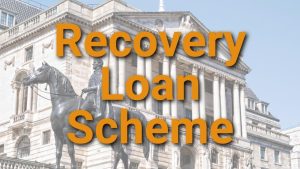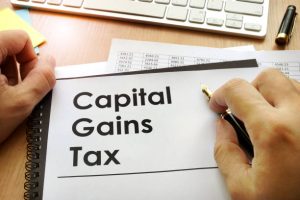Accountants are frequently underappreciated for the value they provide to a company and their role in helping it grow and develop. Of course, we deal in the areas of tax and compliance. But there’s so much more we can do.
We can provide strategic advice and suggest creative ways to save money or increase revenue. Administrative tasks that divert your attention away from your primary business will be eliminated or automated. For tiny businesses, we’re great troubleshooters and strategic counselors. We can assist you in running your company with greater clarity and confidence. Here are 12 services we may provide for your company that you may not be aware of:
Table of Contents
- Launch a start-up
- Help with business strategy
- Fix your cash flow
- Manage your debt
- Deal with unpaid invoices
- Write and pitch loan applications
- Budget smartly
- Get you staffed up
- Set up your cloud accounting software
- Help you manage stock
- Make your business more efficient
- Unlock the power of technology
-
Launch a start-up
It’s an exciting moment to start a new business, but it requires more than a brilliant idea. You must be confident that it will be profitable and successful, and you may need to persuade investors and lenders of this. That is something we can assist you with.
We can assist you in putting your idea to the test, determining your startup and operating costs, and generating accurate income estimates. We also know which lenders are most eager to help, which saves you time and directs you to the correct individuals for financing, before assisting you in perfecting your elevator pitch so you can impress those lenders.
-
Help with business strategy
There are so many moving parts in a business. We can help you get all those parts moving together smoothly. We’ll work with you to set goals – personal, professional, and financial – and give you tools to measure your progress. You’ll end up with a set of key performance indicators (KPIs) that tell you how well your business is doing. And if things aren’t going as planned, we will help you troubleshoot the issues, test solutions, and reset your KPIs as needed.
-
Fix your cash flow
Sometimes capable businesses struggle because they run out of money at the wrong time. Even a highly active business won’t last long if payments are slow to come in, or expenditure is too high.
As accountants, we know that revenue ebbs and flows, and that outgoing costs do the same. We can help you predict the effect on cash flow and come up with strategies to manage the situation. We’ll work with you to come up with a spending plan that ensures there is always money in reserve in case of the worst-case scenario. It will help make payday less stressful, supplier relations stronger, and your life easier.
-
Manage your debt
There are two types of debt: good debt and bad debt. An accountant can assist you in distinguishing between the two. We’ll uncover the most cost-effective borrowing options for your company, balancing repayment flexibility and low-interest rates. We’ll also help you with refinancing if you need it.
We’ll also recommend when surplus funds should be utilized to repay loans and when they should be reinvested in the company. We’ll do so by looking at the mathematics behind your business and how your debt is organized in order to design a customized approach for you.
-
Deal with unpaid invoices
Unpaid bills are a part of life in the corporate world. You may not always have the time to pursue debtors, but you cannot afford to ignore the issue. We can help you get rid of your headache.
When a customer’s bill is due – or overdue – we can set up invoice systems that send automatic reminders to them. Businesses that do not react may be contacted. If invoices are still overdue after this, we can arrange debt finance, in which a company will purchase your unpaid invoices and pursue payment on your behalf.
-
Write and pitch loan applications
Because obtaining a loan might be difficult, a smart accountant will do more than just compile your numbers. That is exactly what we will do, as well as assisting you in crafting an engaging story.
Lenders want to see sound financials and forecasts, but an accountant can help you tie it all together in a presentation that sells your company’s bigger picture. We’ll come up with creative ways to present your figures that aren’t just spreadsheets, so your lender can see the potential. We’ll also rely on advanced forecasting techniques that are trusted by loan officers.
-
Budget smartly
Budgeting in detail can consume a lot of your time and effort. As a result, some companies rely on a hazy set of data that are only guesses. We can assist you in creating a precise and accurate budget that reflects your true business costs. We’ll know how much money you have available to reinvest, and you’ll know how much money you have available to pay yourself.
-
Get you staffed up
Yes, we can assist you in finding the perfect employees for your company.
We’ll figure out what kind of hire will have the most impact on the company. We’ll then calculate the cost of hiring, training, and paying a person to ensure you can afford it, and we’ll assist you with payroll, including government paperwork, tax, and insurance compliance.
-
Set up your cloud accounting software
Your accountant can automate a lot of your business’s accounting so that sales and expense data flows directly into your accounts. We can also provide you with invoicing systems that tell you what’s been paid and what hasn’t.
Some examples of automated systems that we can implement for you are:
- cash flow dashboards
- KPI tracking, so you can check overall business performance 24/7
- automated accounts payable, so you’re always on top of expenses
- mobile accounting apps that allow you to manage your finances from the road
-
Help you manage stock
Do you waste money writing off outmoded or broken products, or do you spend a lot of money on storage? Or do you ever lose money due to a lack of inventory? Inventory management is crucial to running a successful business.
Your accountant will figure out how much it costs to keep inventory on hand and devise ways to save money. We’ll analyze your sales data to assist you to forecast stock requirements so you can schedule precise orders. We can even set up software that monitors stock levels and places auto-orders for things that are about to run out.
-
Make your business more efficient
Everything costs money in business. Storage, utilities, staff. If you don’t have the time or expertise to think about these costs strategically, we can do that for you. We identify unnecessary costs in your business and help you develop more efficient ways of working.
-
Unlock the power of technology
Smart business software can automate a lot of the things you do manually. We can set up affordable software for things like:
- staff scheduling and time recording
- point of sale
- taking payments
- customer relationship management
- invoicing
- payroll
This is one of the most important things we can do for you. Automating business processes saves time, lowers costs, and ensures everything runs smoothly.
Final word
You’ll be surprised at how much of a difference a good accountant can make. We can provide your company with a significant boost in capabilities and insight.
So, what exactly is an accountant’s job? Basically, everything you require. Because if we can’t solve your business problem ourselves, we’ll refer you to someone who can!
Our talented and friendly team will review your current business operations and numbers and advise you on the best ways to cut unnecessary expenses, maximize profits, and expand your business, based on nearly ten years of industry experience working with businesses ranging from start-ups and freelancers to SMEs.
If you are looking for an accountant you can rely on, call us on 020 3002 0436 or send an email to [email protected]






